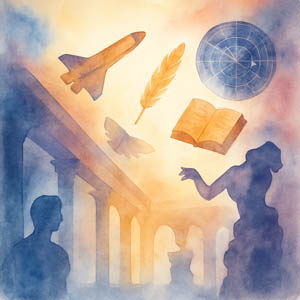— Steven Wright
 If the arms of the Venus de Milo existed, they'd probably be on display in Washington D.C., scattered across galleries like the dismembered statues Steven Wright imagined.
If the arms of the Venus de Milo existed, they'd probably be on display in Washington D.C., scattered across galleries like the dismembered statues Steven Wright imagined.
On this day in 1846, the Smithsonian Institution was chartered by the U.S. Congress, made possible through a $500,000 endowment from English scientist Joseph Smithson. His visionary gift — “for the increase and diffusion of knowledge” — came from a man who had never set foot on American soil.
The original museum, built in 1849, now serves as the information hub for the world’s largest museum complex — 16 museums and galleries holding more than 140 million artifacts and specimens held in trust.
The most visited of them all is the National Air and Space Museum, a breathtaking celebration of flight — from the pioneering Wright Brothers to the boundary-breaking Space Shuttle.
“The one thing the Smithsonian conveys is the stewardship of America’s treasures,” explained Secretary Lawrence M. Small. “That’s not something we’re going to commercialize.”
Admission is free — a rare invitation into a world of discovery, memory, and imagination. This remarkable complex celebrates life in all directions: honoring the past and launching dreams into the future.
Motivational speaker Mark Victor Hansen once said, “In imagination, there’s no limitation.” At the Smithsonian, that feels especially true — because the only limits are your imagination.
 Just imagine...💫
Just imagine...💫
